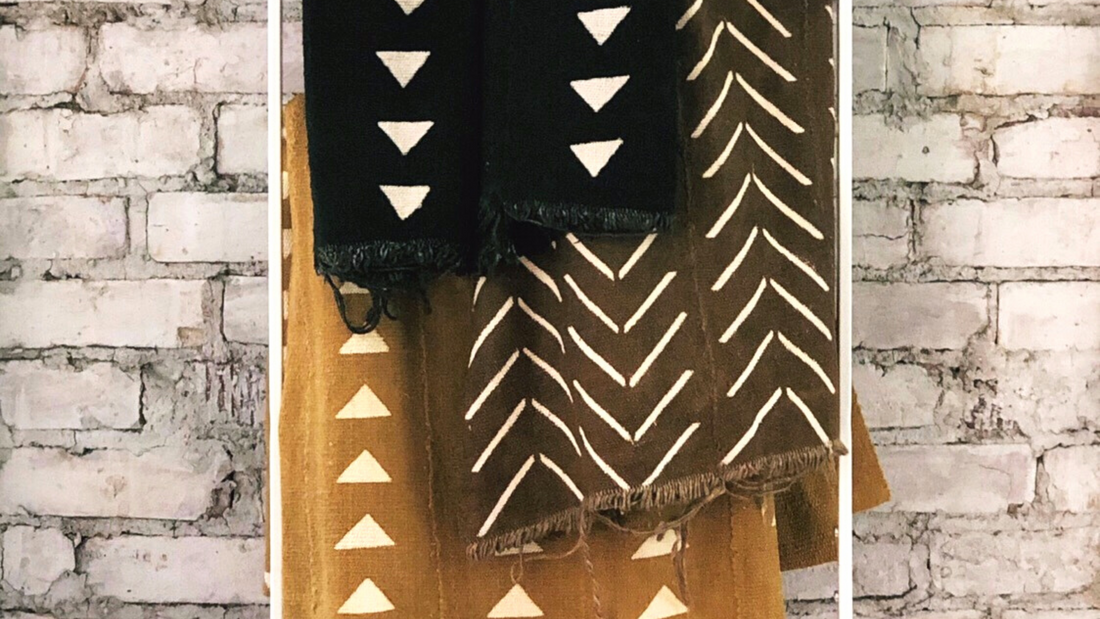
Our Fabrics Tell a Story. Here is Mudcloth's
We hope you’re drawn to Everand® fabrics because they’re beautiful. But why we love them goes well beyond the surface. We want to introduce you to the textiles we use and why we chose them, and we’re starting with Mudcloth, one of the most well-known fabrics in West Africa.

The name is a literal one. Called Bogolanfini or Bogolan in Mali, it’s the combination of three words from the Bambara language: bogo (mud or clay), lan (with), and fini (cloth). Here are the five things we love most about it:
- It’s rooted in women. We’re female entrepreneurs who have put refugee women at the heart of our business. So it’s fitting that Mudcloth originated with the Bamana women of Mali. Historically the men would shear the sheep and weave together the strips of fabric, but women would do the rest: combing, carding, and spinning the wool, dyeing it, and handling any embroidering and tailoring.
- It has a centuries-old history. Mudcloth is no flash in the pan. The textile dates back to the 12th century … or even further. The Smithsonian has an amazing guide to Mudcloth, and it quotes a well-known maker of it as saying “since God created the world…Bogolan was there.”
- It’s made in a special way. In a world that prizes mass production, Mudcloth is created in a highly artisanal process. The cloth is first dyed in a solution made from leaves that turns it a yellow shade and readies it to receive the mud. Once dry, rich black mud that was taken from ponds and fermented over time is applied by hand to the cloth to create the background. The pattern itself is left unpainted. Once the mud dries to gray it is rinsed off and more coats are applied. The areas that remained yellow are then bleached white, with the whole process taking as long as two weeks.
- Each piece tells a story. At Everand, we are all about stories, and Mudcloth is rich with them. Each symbol has a specific meaning, and while some of the symbols—like a twirl for life—are more universal, “these motifs were traditionally codes for a small group of people,” Design Sponge explains. “It is the language of a community so there will always be just a little bit of mystery for the outsider.”
- It’s not perfect. The handmade nature of Mudcloth means there will be slight variations and even small imperfections. That results in a truly unique fabric, one that makes for a truly unique piece for your home and your story.
Fermented mud is probably the last thing that comes to mind when you think of what goes into stunning fabrics. BELIEVE IT. Take a peek at our selection of Mudcloth goods here.

